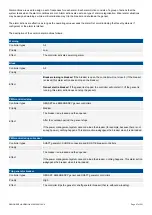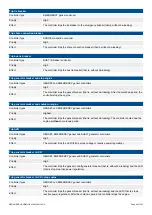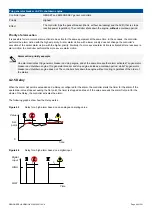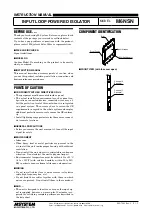
Alarm actions are used to assign a set of responses for each alarm. Each alarm
Action
consists of a group of actions that the
system takes when the alarm conditions are met. Alarm actions also act as a type of alarm categorisation. Minor alarm situations
may be assigned warnings, while a critical situation may trip the breaker and shutdown the genset.
The alarm actions are effective as long as the operating value exceeds the alarm
Set point
(including the
Reset hysteresis
if
configured) or the alarm is latched.
The description of the common alarm actions follows.
Warning
Controller types
All
Priority
Low
Effect
The controller activates a warning alarm.
Block
Controller types
All
Priority
-
Effect
Breaker closing is blocked
: If the breaker is open, the controller will not close it. (If the breaker
is closed, this alarm action does not open the breaker.)
Genset start is blocked
: If the genset is stopped, the controller will not start it. (If the genset is
running, this alarm action does not stop the genset.)
PMS-controlled stop
Controller types
GENSET and EMERGENCY genset controllers
Priority
Medium
Effect
The breaker is de-loaded and then opened.
After the cooldown period, the genset stops.
If the power management system cannot de-load the breaker (for example, because there is not
enough power), nothing happens. This alarm action
only
opens the breaker when it is de-loaded.
PMS-controlled open breaker
Controller types
SHAFT generator, SHORE connection and BUS TIE breaker controllers
Priority
-
Effect
The breaker is de-loaded and then opened.
If the power management system cannot de-load the breaker, nothing happens. This alarm action
only
opens the breaker when it is de-loaded.
Trip generator breaker
Controller types
GENSET, EMERGENCY genset and SHAFT generator controllers
Priority
High
Effect
The controller trips the genset or shaft generator breaker (that is, without de-loading).
DESIGNER'S HANDBOOK 4189340911K UK
Page 97 of 521
















































